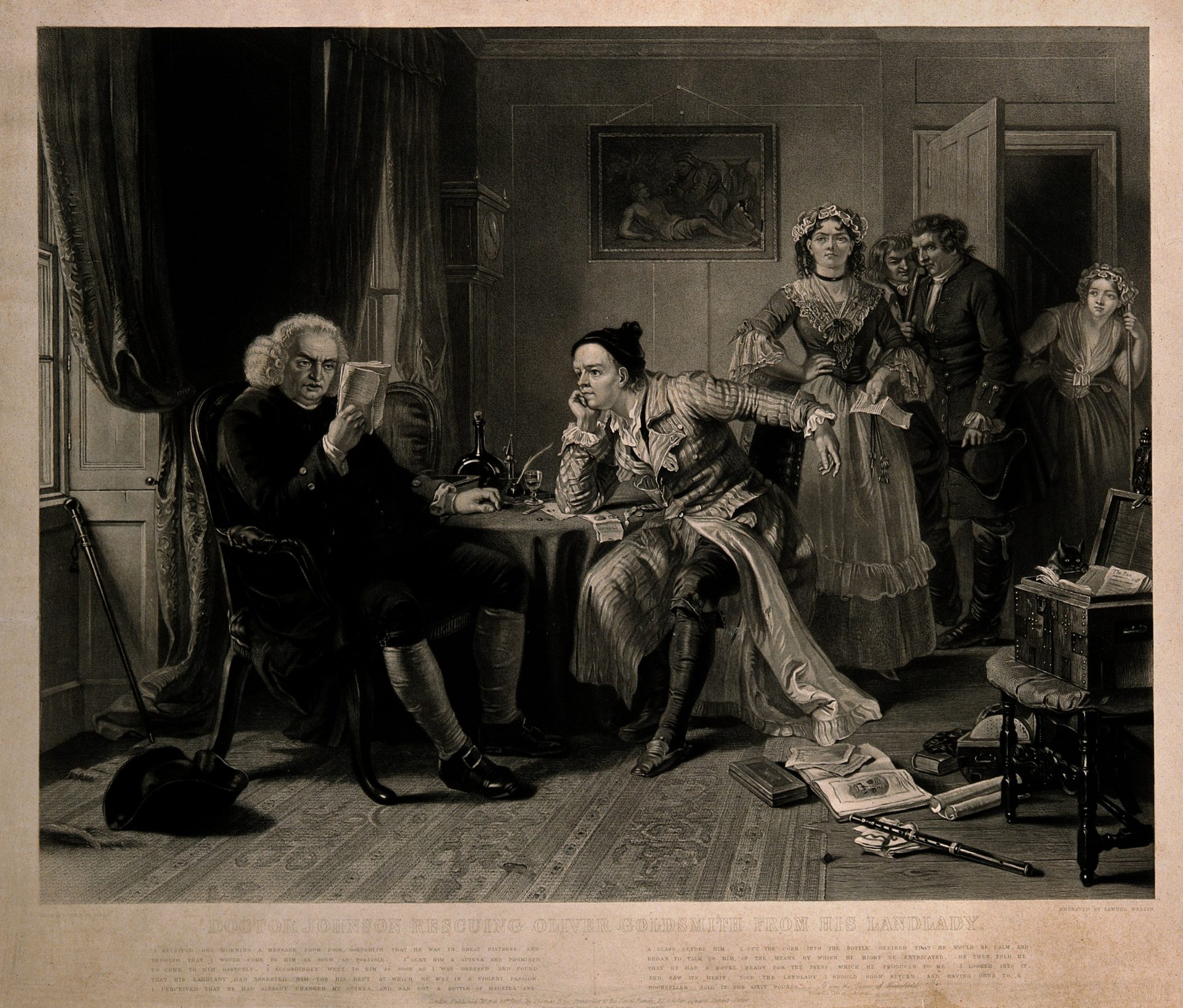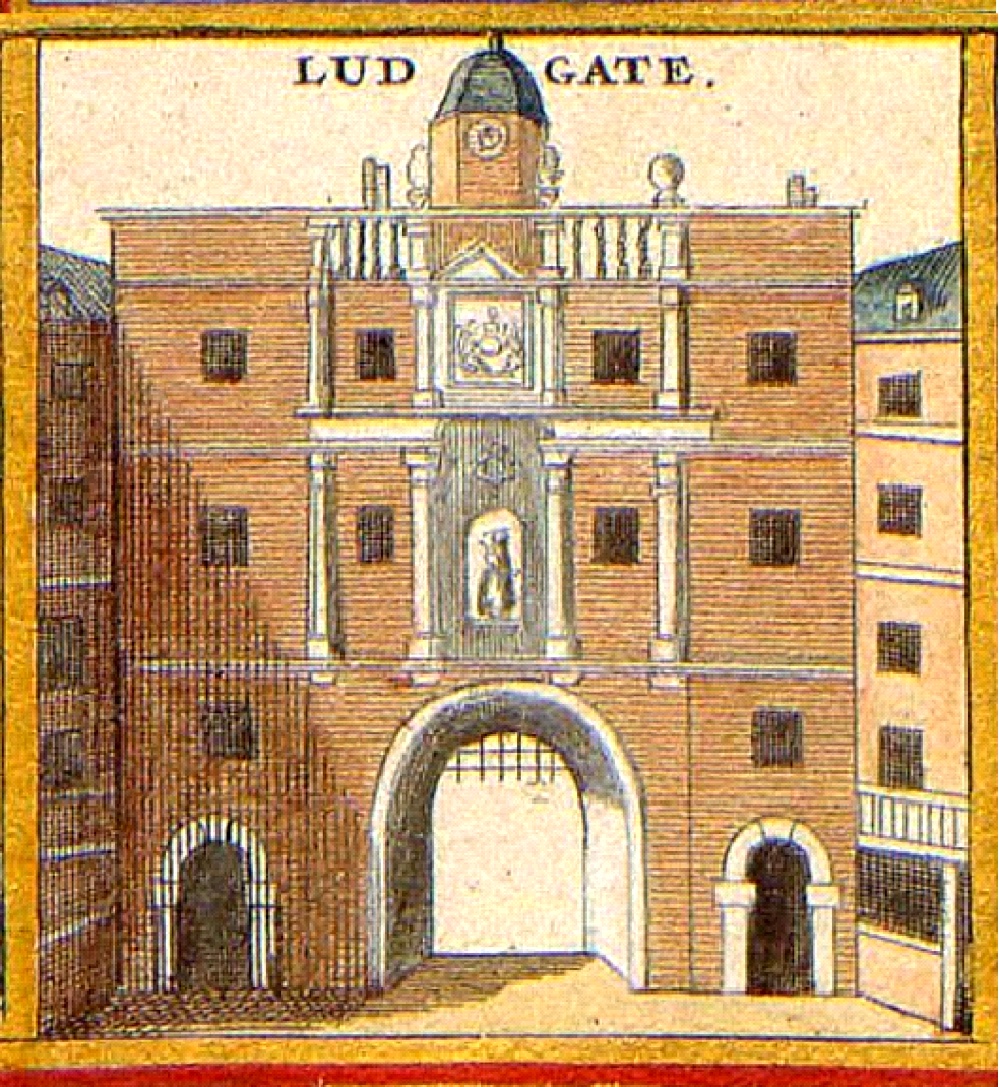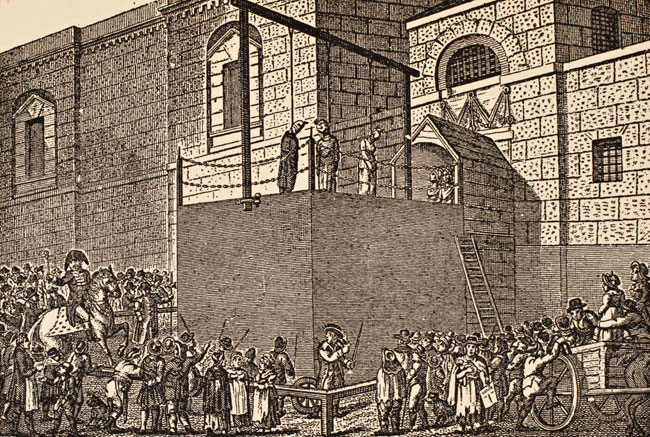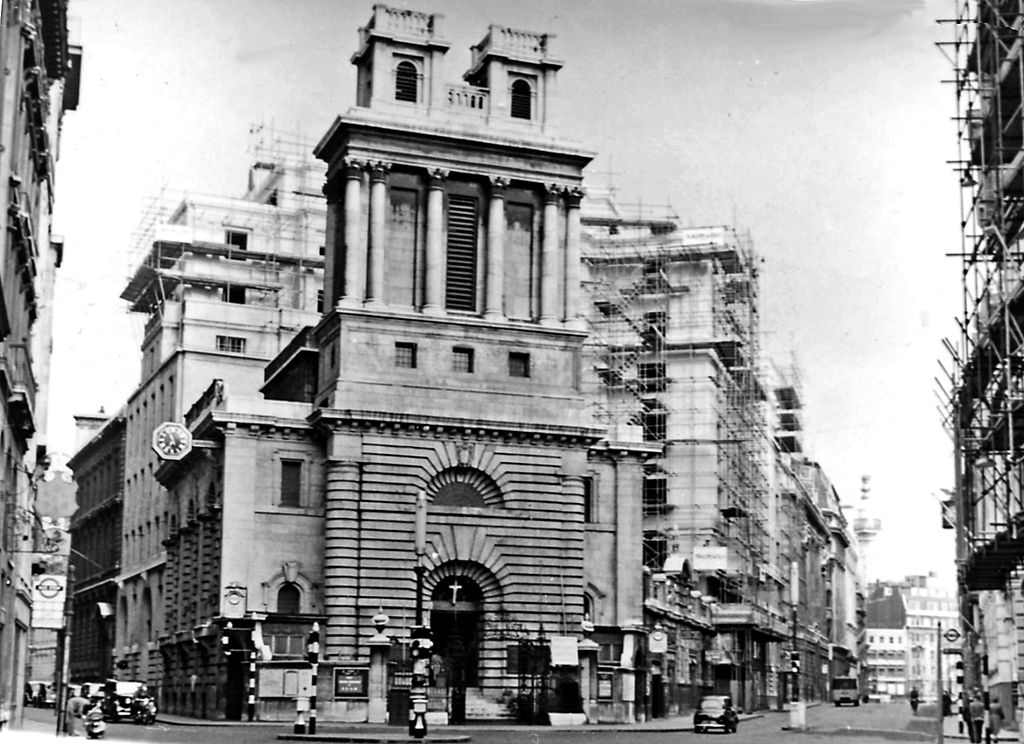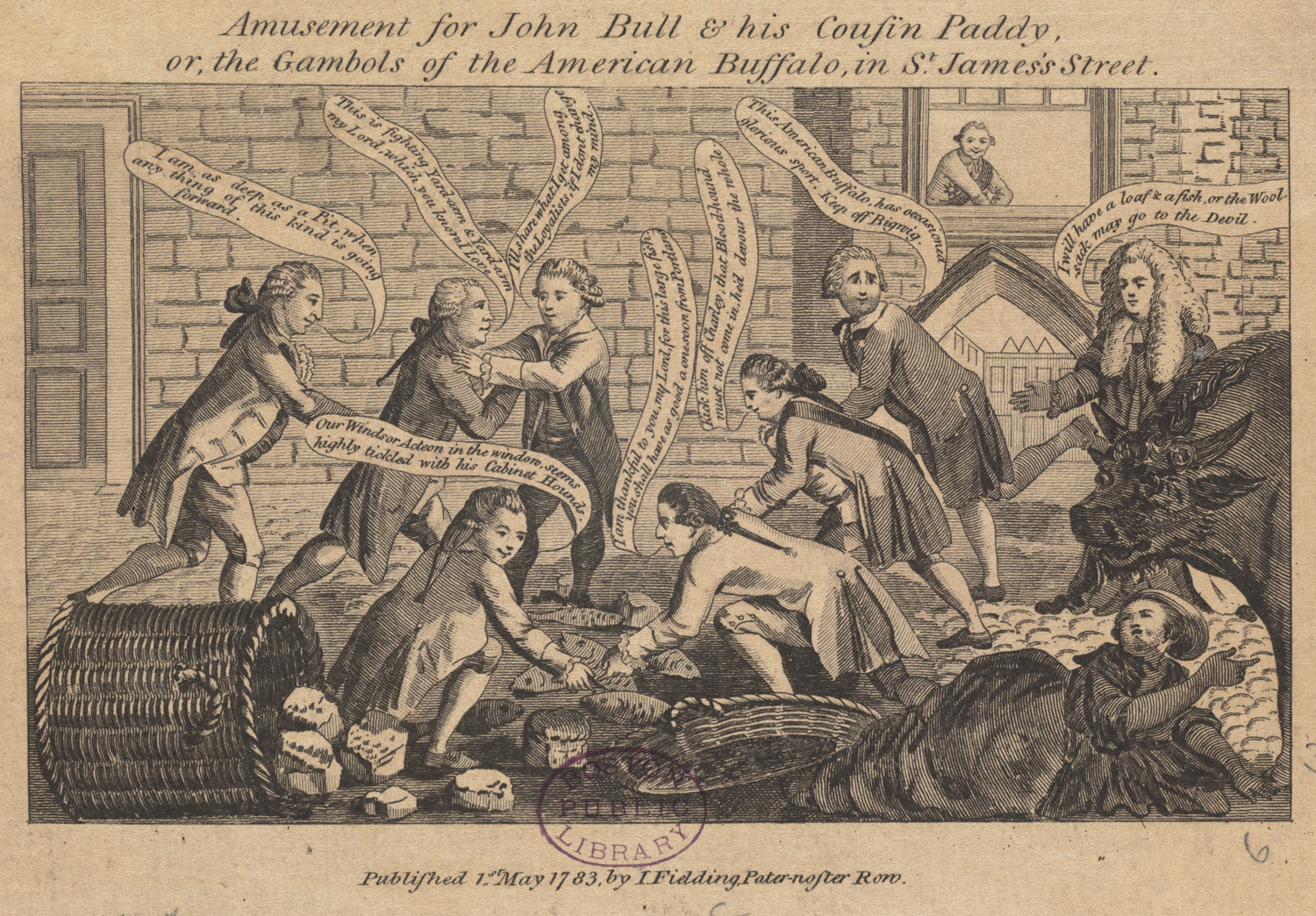Bread Street & Watling Street Literary London, By Pen Lister. October 19, 2017 . Categories: Literary London, Learning Journeys. Tags: learning-point, London
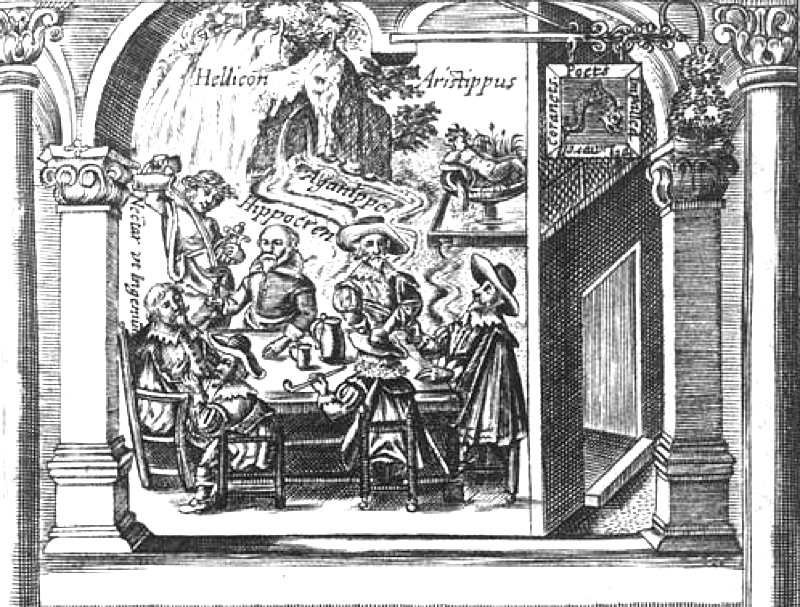
As you walk from London Stone through the Bloomberg building towards Watling Street you are tracing the path of a major Roman thoroughfare and the route you’re taking has been part of the city’s space for two thousand years. Approaching St Paul’s, stop by Ye Olde Watling Pub and learn about the literary connections to another tavern that was once nearby.
The corner of Bread St and Friday Street marked the location of the former Mermaid Tavern. This was the meeting place of the ‘Fraternity of Sireniacal Gentlemen,’ inc. Ben Jonson, John Donne, the dramatists John Fletcher and Francis Beaumont, travel writer Thomas Coryat, translator Richard Carew, and William Strachey, reporter on the English colonization of Virginia and perhaps the imaginative source of the island and shipwreck in The Tempest. Whether Shakespeare drank here is unknown but his association with the sireniacal gentlemen is clear.
Large theatres did not exist inside the city walls as the risk of rousing the mob’s anger with the violent spectacle and passion of a play was not one the authorities could take. The Globe housed 3000 people but was located safely over the river in Bankside where other dangerous institutions like brothels and prisons were also placed. Theatrical companies could not exist without aristocratic patronage and plays could not be performed without the agreement of the censor, The Master of the Revels. The Lord Chamberlain’s office of censorship was not abolished until 1968.
Jonson’s Inviting a Friend to Supper (date unknown):
‘Digestive cheese and fruit there sure will be; But that which most doth take my Muse and me, Is a pure cup of rich Canary wine, Which is the Mermaid’s now, but shall be mine; Of which had Horace, or Anacreon tasted, Their lives, as so their lines, till now had lasted. Tobacco, nectar, or the Thespian spring, Are all but Luther’s beer to this I sing.’
In February 1819, Keats composed Lines on the Mermaid Tavern:
‘Souls of poets dead and gone, What Elysium have ye known, Happy field or mossy cavern, Choicer than the Mermaid Tavern?’
Aspects of this place to think about
Is it possible to conjure understanding of historic life from the buildings of Bread St or Watling Street? Do we have current places that compare to the Mermaid Tavern or is this culture of intellectual (drunken) discourse gone forever?
- The different role of alcohol and coffee in public and private life
- Theatre and popular feeling. Which media forms are most likely to rouse the mob today?
- Class struggle and moving between social barriers
- The politics and censorship of literature in the 17 th and 18 th centuries
- The traces around you of Roman, Medieval, Elizabethan and Georgian London
Content available at the location, about the place or area
Investigate all the other icons on the Aurasma augmented trigger, use the icons guide to find out what is available.
![]()
This guide is accessed via the layers icon in the bottom left of any trigger using a similar icon to this one:

Triggering the Augmented Reality
Remember to focus on the trigger image using the Aurasma camera, centering the image to be as similar to what you see on the map as you can. The Aurasma camera provides small watermarks at each corner of its camera view to help guide your focus.
Image by William Marshall, engraver – ‘A Solemne Joviall Disputation, Theoreticke and Practicke; briefly shadowing the Law of Drinking’, Public Domain,Wikimedia Commons
Bread Street & Watling Street Resources
By Pen Lister October 19, 2017
The Mermaid Tavern in Literature (wikipedia)
Shakespeare and the Sireniacal gentlemen, Jonson, Beaumont, Keats… https://en.wikipedia.org/wiki/Mermaid_Tavern
Shakespeare’s Playhouses]()
From the open-air Globe to the candlelit Blackfriars, Professor Eric Rasmussen and Ian DeJong explore early modern playhouses. https://www.bl.uk/shakespeare/articles/shakespeares-playhouses
The Globe Theatre (Wikipedia)
A rich resource of the Globe Theatre’s history. https://en.wikipedia.org/wiki/Globe_Theatre
The Master Of the Revels (Wikipedia)
The Master of the Revels was the holder of a position within the English, and later the British, royal household, heading the “Revels Office” or “Office of the Revels” https://en.wikipedia.org/wiki/Master_of_the_Revels
Bread Street and Corwainers’ Wards, (1773)
“The ward of Bread-street is named from its principal street, which was antiently the bread market; for by the records it appears that in 1302…”. Includes old map. http://www.british-history.ac.uk/no-series/new-history-london/pp558-560
Biography of John Milton, 1608-1674
“our protagonist was born in Bread Street, London, an important street that also housed the Mermaid Tavern which was patronized by many notable literary figures of the time…” http://darknessvisible.christs.cam.ac.uk/miltons_life.html
Biography of John Donne 1572-1631
John Donne, born in Bread Street to Roman Catholic family at time when anti-Catholic sentiment was rife in England. […] Father, John Donne, died suddenly 1576, leaving three children to be raised by mother, Elizabeth, daughter of epigrammatist and playwright John Heywood and relative of Sir Thomas More. http://www.luminarium.org/sevenlit/donne/donnebio.htm
John Donne is related to Sir Thomas More
A family tree of John Donne, showing connection to Sir Thomas More http://www.luminarium.org/sevenlit/donne/donnepedigree.htm
Bread St Ward, from John Stow, A Survey of London, 1603
BRedſtreete ward beginneth in the high ſtreete of weſt Cheape, to wit, on the ſouth ſide, from the Standard to the great Croſſe http://mapoflondon.uvic.ca/BREA3.htm
